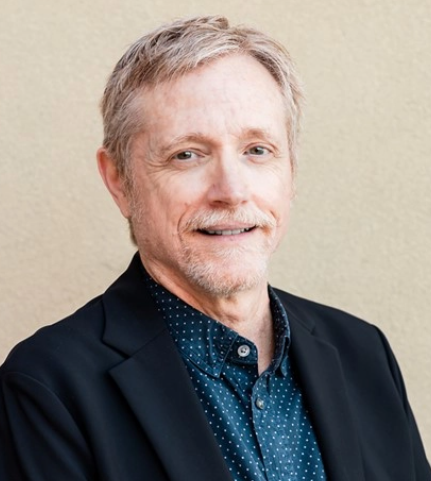Why Do We Have Opioids? Medical Benefits, Drawbacks & Misuse

It’s not news to people at this point that we have a major opioid crisis in the United States. Millions of Americans have become addicted to opioids in various forms, causing thousands of deaths from overdoses every year, putting a large strain on our healthcare system, and shattering families with the debilitating symptoms of drug abuse.
But how did we get here? Is there a reason opioids are so prolific in the United States? Opioids, when used correctly, can have significant medical benefits. However, they are highly addictive and easily overprescribed. In this article, Dr. Sherrick of Community Medical Services looks at opioids, the good, the bad, and the ugly. Learn more about the medicinal benefits, the potential drawbacks, and where we go from here as a nation to help those who have succumbed to Opioid Use Disorder (OUD).
Opioids have been around for a long time
To better understand why opioids are so widespread, we need to go back to the beginning.
It may shock you to learn that opioids are not a modern invention. Evidence points to opium being extracted from poppies around 8,000 years ago and possibly before. People noticed the marked effects of an extract from the pods of the poppy plant – euphoria, drowsiness, and pain relief. The negative side of opioids – tolerance, misuse, addiction, and overdose – are described in ancient documents as well.
The active component of the opium poppy, morphine, was isolated in the early 1800s. By the time of the American Civil War, the hypodermic needle was introduced, and morphine and other opiates were used routinely for pain treatment in soldiers wounded in battle. Since then, many other opioids have been produced – heroin, codeine, hydrocodone, oxycodone, methadone, buprenorphine, and others. In 1914, the Harrison Narcotic Act regulated all opioids and made them legal only when prescribed by physicians for medical purposes.
The medicinal benefits of opioids
While there are many different opioids, all of them work through the mu-opioid receptors in the brain and peripheral nervous system. Therefore, they all have similar effects. One of the most beneficial is rapid and profound short-term pain relief, especially when administered by injection or intravenously. Even pain from severe wounds can be brought to tolerable levels by using opioids. Unfortunately, however, the brain quickly develops tolerance to the analgesic effect (the property of some medications to relieve pain) of opioids. While they are effective for treating pain in the short run, they are not effective for treating long-term, chronic pain.
Opioids also may cause drowsiness and relieve anxiety and depression, producing a euphoric state where people feel “high” and are no longer worried about their life problems. When the drugs wear off, however, the problems are still there, as well as any associated depression and anxiety, leading to cravings and desire for more drug use.
The drawbacks of using opioids
Despite their great potential to relieve pain, opioids are also very dangerous if misused or used long-term. Opioids can cause people to stop breathing and die if too much is taken at one time. This is what is referred to as an overdose. Opioid overdoses have led to the deaths of hundreds of thousands of Americans.
Another concern is the potency of illicit opioid drugs found on the streets. Opioids from non-regulated sources have compositions and effects that vary, and a potent batch of drugs can lead to a spate of overdoses in a short time.
Anyone who takes opioids regularly will develop tolerance to them. This means that higher doses are required to achieve the same effect. Once tolerance has developed, the brain becomes adapted to the presence of opioids. People who have developed opioid tolerance will have severe withdrawal symptoms that start within a few hours if they don’t have a continuous supply of drugs.
These withdrawal symptoms, while not necessarily medically dangerous, are intensely uncomfortable, and they may drive people towards compulsive use and addiction. Eventually, people who have developed an opioid addiction may be forced to seek them from non-regulated sources to meet their need for higher doses and more frequent consumption.
Opioids also have several minor side effects, such as pinpoint pupils, constipation, dry mouth, and decreased libido. Still, these are minor compared to the “high” that many people seek.
How do we use opioids as medicine today?
Physicians and other licensed professionals prescribe opioids in numerous settings – hospitals, emergency departments, operating rooms, nursing homes, intensive care units, and outpatient settings. They are used during surgery as adjunctive medications to general anesthetics. This means they are taken alongside anesthetics to help increase their effectiveness. In the hospital, they can keep people out of severe pain and relieve the discomfort of mechanical ventilation and other medical interventions.
Opioids are commonly used postoperatively to help people who have pain due to surgical procedures. This is an area where there have been significant changes recently, with the understanding that fewer opioids are required for adequate pain relief. Most surgeons are prescribing fewer opioid pills, using recommendations from groups such as the Michigan OPEN program.
Palliative care and hospice programs rely heavily on opioids for symptom relief towards the end of life. In these situations, addiction and tolerance are less of a concern, and opioids can be vital in improving the quality of the remaining life for an individual.
Opioid misuse and addiction
Millions of Americans have become addicted to opioids – sometimes due to legitimate prescriptions from their healthcare providers, while others start with illicit drugs from drug dealers. Once people have become addicted, they may need large quantities of opioids to feel normal throughout the day, and obtaining and using opioids can become the entire focus of their lives. An opioid addiction can devastate someone’s life and livelihood, as well as severely affect those around the person with the addiction.
People who have an opioid addiction usually do not get significant pain relief from using opioids due to their tolerance. Studies have shown that people with an opioid addiction are more sensitive to painful stimuli than others. Even if they desperately want to stop using drugs, they are unable to do so without help due to the power of the addiction. Few people who have not experienced or seen an opioid addiction up close can understand just how powerful the addiction is and how intense withdrawal symptoms and cravings can be.
How do we help people addicted to opioids?
Fortunately, there is help in the form of life-saving treatment that can release people who have an opioid addiction from their burden and give them their lives back. Treatment with FDA-approved medication, such as methadone or buprenorphine, combined with counseling and other forms of support, is one of the most effective treatments we have in medicine today. A holistic approach to treatment, such as that offered at Community Medical Services, helps patients treat both the symptoms of their addiction and the underlying causes of it.
We’ve helped countless patients conquer their addictions and reclaim their lives. No matter how difficult it may seem, no patient is too far gone. Recovery is within reach, and we are here to help.
If you or someone you know is struggling with opioids, reach out to us at 855.203.6352 or find a clinic near you.

About the Author
Dr. Robert Sherrick was appointed as CMS’s first Chief Science Officer in 2023, transitioning from Chief Medical Officer, a role he served for years.
Prior to serving CMS he had experience working at an inpatient addiction treatment facility in Montana, Pathways Treatment Center, treating all forms of Substance Use Disorders and dual diagnosis patients. Dr. Sherrick has been providing Medication Assisted Treatment for Opioid Use Disorder since 2003, initially in an office setting using buprenorphine and subsequently with methadone in Opioid Treatment Programs.
He established a state-wide buprenorphine treatment program for VA Montana with an extensive focus on telemedicine. He is board certified in Addiction Medicine through the American Board of Preventative Medicine and is the Immediate Past President of the Northwest Chapter of the American Society of Addiction Medicine.
Dr. Sherrick received his MS and BS degrees in Electrical Engineering from the Massachusetts Institute of Technology, and his MD from George Washington University Medical Center.
Related Content
Treating Opioid Use Disorder While Pregnant: Addressing Your Concerns While Expecting
Pregnancy can be a special time, full of joy and anticipation. But for women struggling with an addiction to fentanyl or other opioids, it can be difficult and stressful. Every woman wants to be a good mother and do everything she can for her baby, but having to deal with an addiction makes it significantly more challenging.
How Does Methadone Work?
Addiction is a very powerful thing. Opioid addiction is even more so. The opioid addiction epidemic has been sweeping our nation for years now. During this time, medical experts have banded together to devise new and better ways to treat patients suffering from opioid use disorder (OUD). Methadone has long been a tried and true staple in the substance abuse doctor’s trusty toolkit. But how does it work?
Why Methadone Dosing Needs to Change
For years, Community Medical Services has encountered a common problem at all of our clinics: The required starting dose of methadone (30 mg) to treat opioid withdrawal just isn’t enough for many patients.
Methadone is a powerful part of medication-assisted treatment programs (MATs).





Start the conversation